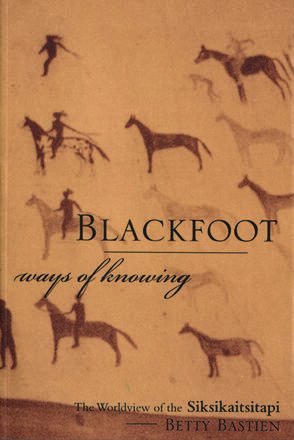
Blackfoot Ways of Knowing
The Worldview of the Siksikaitsitapi
La description
Blackfoot Ways of Knowing is a journey into the heart and soul of Blackfoot culture. In sharing her personal story of "coming home" to reclaim her identity within that culture, Betty Bastien offers us a gateway into traditional Blackfoot ways of understanding and experiencing the world. As a scholar and researcher, Bastien is also able to place Blackfoot tradition within the context of knowledge building among indigenous peoples generally, and within a historical context of precarious survival amid colonial displacement and cultural genocide. In mapping her own process of coming to know, Bastien stresses the recovery of the Blackfoot language and of the Blackfoot notions of reciprocal responsibilities and interdependence.
For the Siksikaitsitapi, knowledge is experiential, participatory, and ultimately sacred, rather than objective and inert. Rekindling traditional ways of knowing is essential if First Nations people in Canada are to heal and rebuild their communities and cultures. By sharing what she has learned, Betty Bastien hopes to ensure that the next generation of First Nations people will enjoy a future of hope and peace.
Reviews
Betty Bastien's ambitious goal is no less than the decolonization of Blackfoot ways of knowing as a vehicle to regaining independence, promoting personal and cultural healing, and providing a basis for a new educational system . . . Bastien has done a good job in capturing the complex issues that concern many Blackfoot elders who are striving to live by means of traditional teachings and fulfilling the responsibilities that come with having a "good heart."
- —Patricia A. McCormack, Great Plains Quarterly
Bastien has produced an important work that lays the foundation for making the Blackfoot way of knowing more accessible. Her discussions of Siksikaitsitapi ontology and pedagogy offer culturally appropriate ways of transferring this knowledge through a Siksikaitsitapi-controlled education system. Russel Wright, the late Siksika teacher and elder often said, "We have been studied to death. It is time we start studying ourselves back to life." He would have been proud of Betty Bastien’s study.
- —Geralt T Contay, Histoire social/Social History